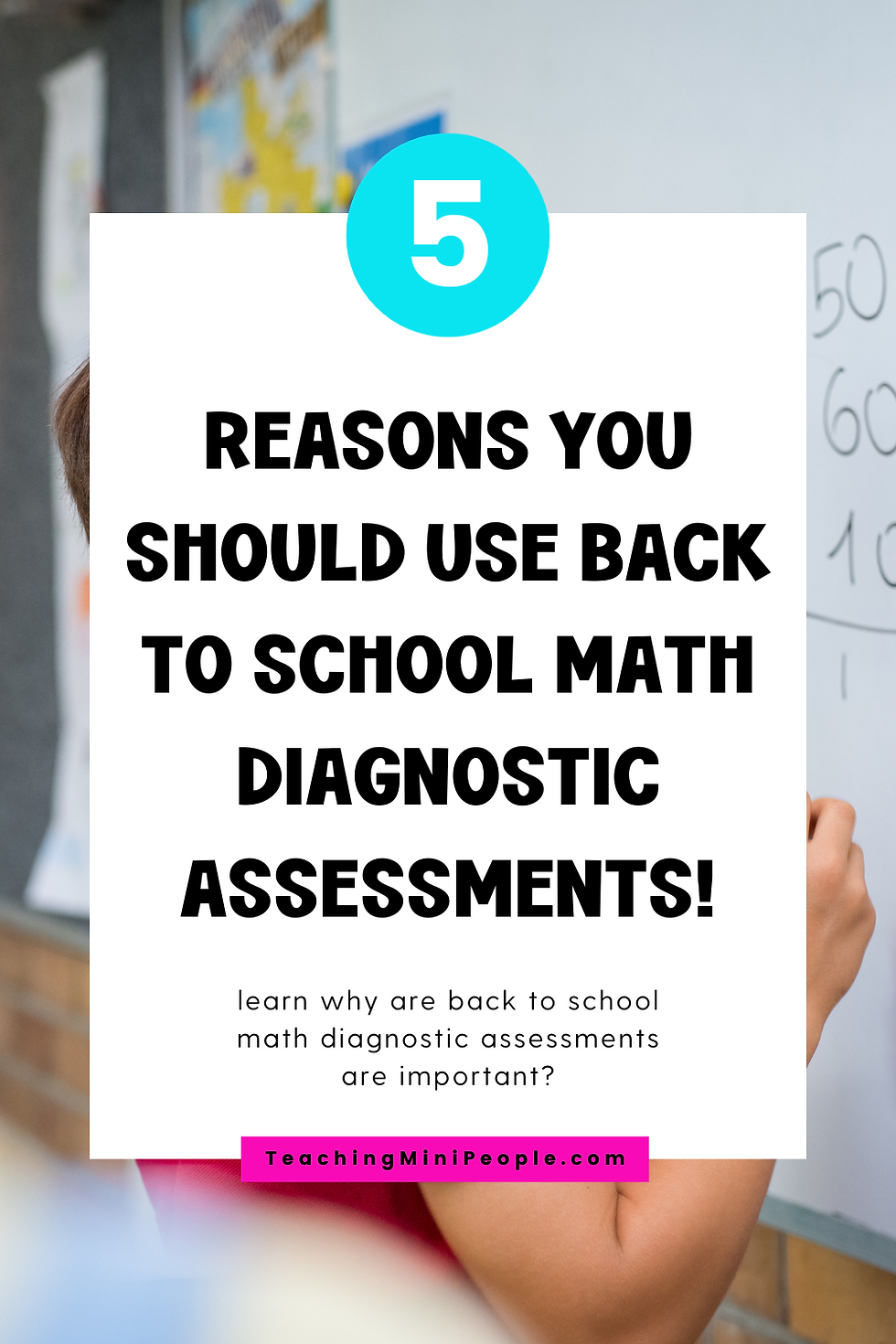Why are Back to School Math Diagnostic Assessments Important?
- Kristy Johnson

- Aug 21
- 3 min read

Each year at back to school time, we have a plethora of things we have to get done and prepared for. We have to set up our classrooms, get all the important paperwork from parents, learn about our students, and the list goes on! Well, I am here to convince you that math diagnostic assessments should be at the top of this list! These five reasons are the foundations of WHY these assessments are so important as soon as you start the year.

1. Relationships: Most importantly, in all things we do in the classroom, our goal is to build relationships with our students, their parents, and any support staff that will also benefit the students.
These assessments help students know we care about what they know, so we can help them learn and fill in gaps.
We are able to tailor feedback to students early on and discuss goals for the year.
Early support and conversations allows us to build trust with each student, as we track their progress throughout the year.
2. Measure Gaps, Loss, or Gains: Assuming we have some kind of data from the end of last school year, we are able to compare the two to see if there was a significant “summer slide”. However, if those are not available, we are still able to see where our student currently is to move forward.
If we have previous data, we are able to see how the student’s retention is over the long break, as well as if they continued review and are showing growth.
If we don’t have previous data, we can still see what gaps they have that will need extra review and support going forward.

3. Understanding Student Thinking: Now that we have measured gaps, gains, and losses, we are able to understand our students' thinking.
I always suggest a paper and pencil diagnostic so our students can work out their problems on paper and we can assess whether they used strategies like CUBES on their word problems.
I have beginning of the year assessments for 3rd grade, 4th grade, 5th grade, and 6th grade students. These can be used to assess student thinking. I always require my students to show some type of work for every problem!
When we get to see student work and understanding, we can also identify any misconceptions early on. We can’t just focus on what is wrong in the work and answers, we need to focus on why their answers were incorrect as well.
4 . Communication: We all know communication is a huge part of teamwork, learning, and growing. Communication also goes back to building relationships, as we must communicate in order to have strong relationships.
Now that we have some data, we can communicate our findings about gains, loss, and gaps with parents in early conferences to make sure we are on the same page going forward.
Communication is also important when it comes to working with support staff that our students work with. We want to be on the same page, even if the student switches to different classrooms to work with other teachers.

5. Inform Instruction: Finally, now that we have given the math diagnostic assessments and went through the data, we are able to use it to tailor our instruction and reach our students where they are.
We can use the data to create our math groups for seamless rotations. In my classroom, I use fluid groups, therefore, I do not have to create actual groups but I use this data to decide what type of centers I have in each rotation to help fill in gaps and extend learning.
This assessment also helps us differentiate for our small groups. When we meet with students, we are able to group them based on gaps and address misconceptions directly.
Although we know we have to teach the standards, these assessments allow us to prioritize certain standards, especially if the majority of the class struggles with them. I always try to prioritize standards that we build on to make sure my students have a strong foundation first.
Have I convinced you?! While you are preparing for back to school, take a few extra minutes to find a BTS math diagnostic assessment that will benefit your instruction and your students’ learning. My assessments that I mentioned earlier have options for pre/post assessments for each unit, as well as the full year mixed review assessment. These are my favorite to use for the beginning of the year, starting each unit, and at the end of the unit.




Comments